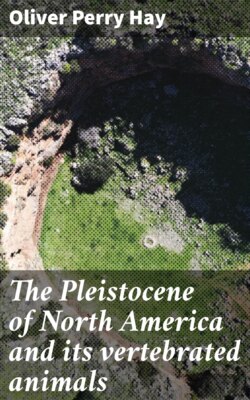Читать книгу The Pleistocene of North America and its vertebrated animals - Oliver Perry Hay - Страница 19
На сайте Литреса книга снята с продажи.
XIV. The Sangamon Interglacial Stage.
ОглавлениеTable of Contents
This was the warm stage which succeeded the glacial Illinoian. Between the Illinoian and the Wisconsin there passed a long period of time. It is now believed that it was interrupted by the Iowan ice-sheet, but this appears not to have lasted long nor to have occupied any considerable area. Associated with it in some way was the accumulation of much loess. This was formerly supposed to have been deposited to a large extent at least during the Sangamon; but, as Leverett informs me, it appears to have been laid down at a time nearer the Wisconsin than the Illinoian. This Iowan drift and the loess has been the subject of a special investigation by Alden and Leighton (Iowa Geol. Surv., vol. XXVI, pp. 49–212). Few vertebrate fossils have been found in the loess. Their bones may have been dissolved out by the percolating rain-water, and yet the delicate shells of land mollusks are abundant. A collection which the writer regards as belonging rightfully to the Sangamon was made at Alton, Illinois, many years ago, by William McAdams. A list of the species and an account of the geological conditions connected with it are presented on page 339. The remains appear to have accumulated in a pond on the Illinoian drift and to have been covered by loess. The horse was yet in existence, as well as the deer Sangamona and the antelope Taurotragus americanus. Two-thirds of the 15 species are extinct. A smaller number of species have been collected near Kimmswick, just below St. Louis, Missouri. The remains found in a cave in Bexar County, Texas, are believed to belong here (Hay, Proc. U. S. Nat. Mus., vol. LVIII, p. 129). It is, however, in the Alleghany Mountains that most of the vertebrates have been collected which the writer refers to the Sangamon stage. These have been found in caves and fissures from northern Pennsylvania to northern Alabama. Unfortunately, although mostly discovered several years ago, some of these collections have not yet been well studied and have not been accessible to the writer. They contain two or three species of horses, two or three genera of peccaries, tapirs, the deer Sangamona, the antelope Taurotragus, and one or more species of saber-tooth tigers. Half or more of the species are extinct. To the writer these assemblages seem to fit into the history nowhere so well as into the Sangamon stage.
Another assemblage that probably belongs here is that made at Toronto (p. 282). This indicates a warm climate, since the pawpaw and the osage orange grew there.
